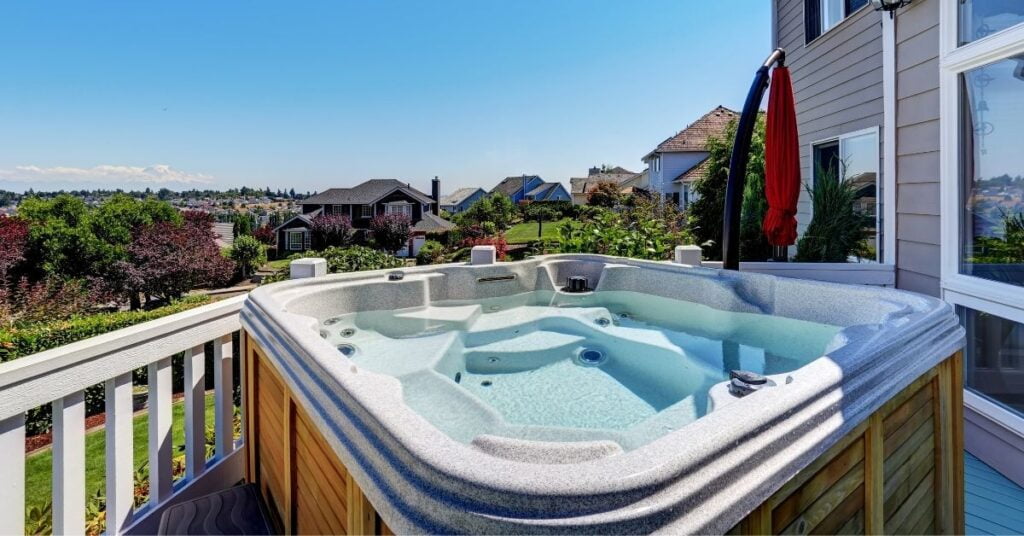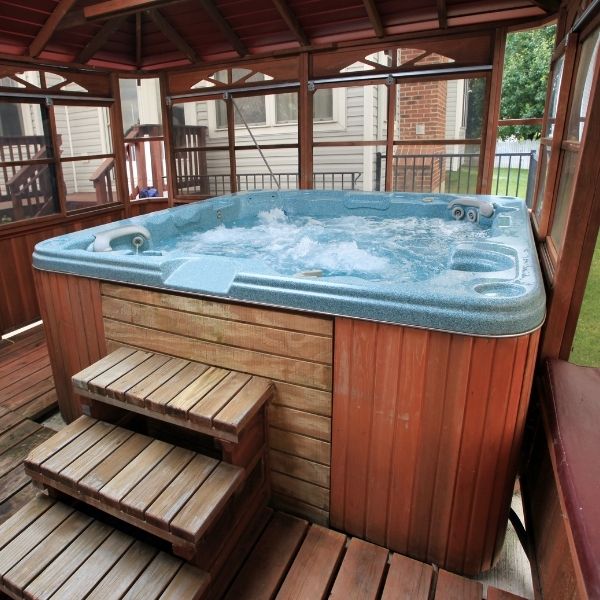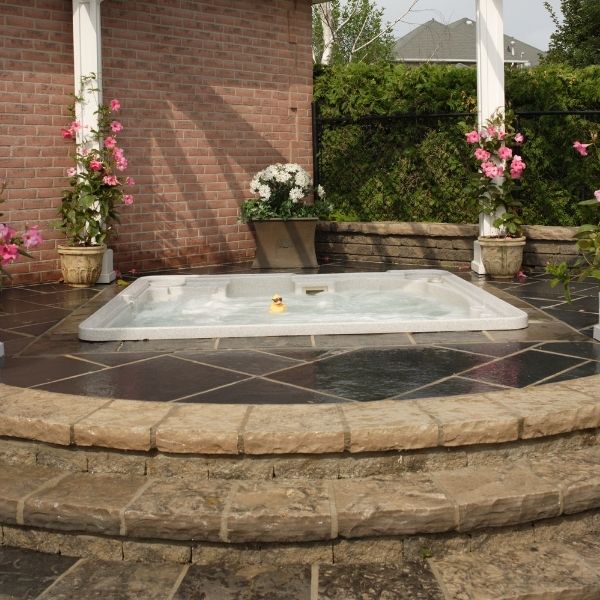This article provides you with simple ways to level a hot tub. We'll explain why you need to level a hot tub and some solutions you can use.
A hot tub is a relaxing place to spend time with friends and family. But for some people with a sloped or uneven surface, leveling a hot tub can become a headache.
Some solutions can be found around the house or at your local hardware store. But for slopes more than an inch, it would take more effort.
Before that, let's answer a common question most people ask when it comes to leveling a hot tub.
Why a hot tub needs to be level
A hot tub needs to be level to prevent stress fractures. Placing a hot tub filled with water, people, and jets turned on puts uneven stress on the hot tub. Over time this will result in fractures and cracks in the hot tub's frame or shell, shortening its life span.
That said, hot tubs can be placed on any solid, level surface as long as the weight of the hot tub and occupants is taken into account. Any code-compliant floor will work fine when placing a hot tub indoors. Sometimes floors will shift or settle on one side, causing your hot tub to tilt slightly. You can quickly correct this using shims.


However, you might need a different solution if the slope is more than an inch, particularly outdoors. For this, you're going to need a hot tub leveler, or if you want to make it permanent, a perfectly level solid base or platform made of concrete or wood. Pavers also work, but you need some prepping to ensure they don't settle.
Key Takeaways: A perfectly level hot tub minimizes stress on your hot tub and ensures long use for many years.
Level your hot tub using wooden shims
Wooden shims are inexpensive, and you can find plenty of them at your local hardware store. But if you have extra 2x4s lying around in your backyard, you can make them yourself. That way you don't have to spend any money. Cut wedge-shaped pieces of 2x4 lumber and insert them every foot across the low end of the tub base.


Empty the hot tub and insert the wooden shims at the low end of the hot tub. You'll need an extra pair of hands for this job. Tap the shims with a rubber mallet ever so slightly while checking the hot tub's tilt from time to time with a spirit level. Do this until you get a perfectly level hot tub.
Note: check your hot tub's warranty before shimming. Using shims on brands like Jacuzzi will void its warranty.
Key Takeaways: Go for inexpensive wooden shims for slopes or tilts less than an inch thick.
Level your hot tub using plastic shims
Similarly, you can level a slightly off-kilter hot tub using plastic shims. They're inexpensive, and you can choose different thicknesses and sizes for your hot tub. Use shims at regular intervals across the low side to provide even support for the tub's total weight.
If you are having trouble installing shims, consider looking at the user manual provided by your hot tub manufacturer. Check around the hot tub's base for shim points that tell you where exactly to insert the shims. Again, using shims on some brands will void its warranty, so refer back to your manual before doing it.
Key Takeaways: Some hot tubs come with plastic shims. However, in some brands, using shims will void its warranty.
Level your hot tub using a hot tub leveler
If you want something more durable and can be moved around your property or inside your home, you can go for a hot tub leveler. It's a lot pricier than shims, but it's also going to last longer, probably even as long as your hot tub.


A hot tub leveler comes with adjustable leveling feet, which can be fined tuned to any level you want. Another advantage is that it completely drains off the water underneath your hot tub, prevents wood rot damage (yes, your hot tub's frame is made of wood), and eliminates green mildew stains on your concrete.
It is typically made of wood or metal and can cost around $600.
Key Takeaways: Unlike shims, hot tub levelers are more durable and provide excellent runoff for your hot hub.
Build a Raised Pad or Platform
A raised pad constructed from wood and filled with sand or gravel provides a stable surface for your hot tub. Be sure to tamp it down and add a layer of leveling compound to prevent settling. Top it off with smooth interlocking pavers for that chic, stylish-looking platform. Check your pad with a spirit or laser level to ensure your pad is perfectly level.
Pavers offer more support than concrete slabs or wood, and their low absorption rate makes them resistant to common problems with poured concrete.
A custom-built raised pad will require a bit of carpentry knowledge and tools. If you have a knack for doing carpentry jobs, you'll find this pretty easy. One of the advantages of the wooden platform over sand or concrete pad is that it performs better at draining off water from your hot tub's base, increasing its longevity.
But if carpentry is not your thing, it's best to find a local handyman who can do the work for you reasonably. Or, if you want to spare yourself the trouble, you can buy a hot tub leveler instead.
Key Takeaways: Building a raised platform for your hot tub takes skill and experience. If you've never done any of these before, it's best to have a professional do it.
Pour a New Concrete Pad
You can pour a solid concrete pad if you've decided to put your hot tub on a fixed spot outdoors. If this is your first time pouring concrete, have someone who had experience as the wrong mixture may cause your concrete pad to crack.
About 4 inches thick is good enough for most hot tubs. Tamp down the soil to avoid settling and use steel bars for reinforcement. Again, if you're new to this, you're better off leaving this job to professionals.
Key Takeaways: Concrete pad is a permanent fix to keep your hot tub as level as possible. Decide carefully where to pour your concrete pad and make sure there is a power source nearby.
Final Thoughts
There are many ways to level your hot tub depending on the tilt's severity and your comfort level. Whether you choose to shim it up, build a new pad, or purchase a prefab leveler, you'll soon be enjoying a relaxing dip in your perfectly level hot tub.
